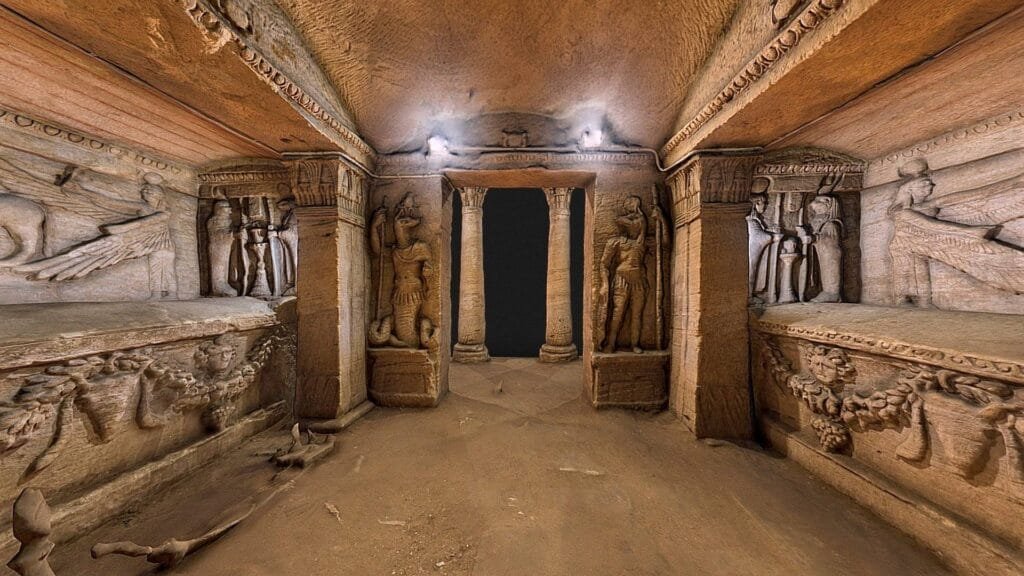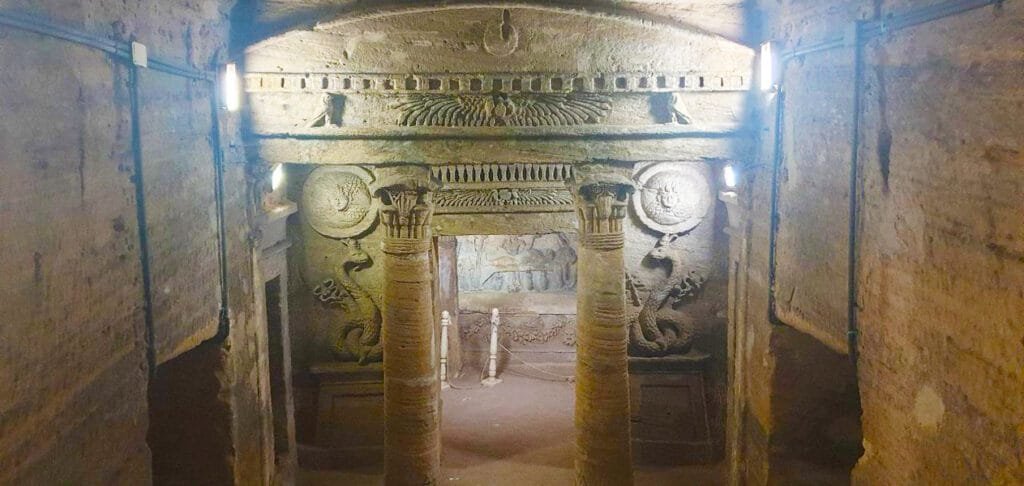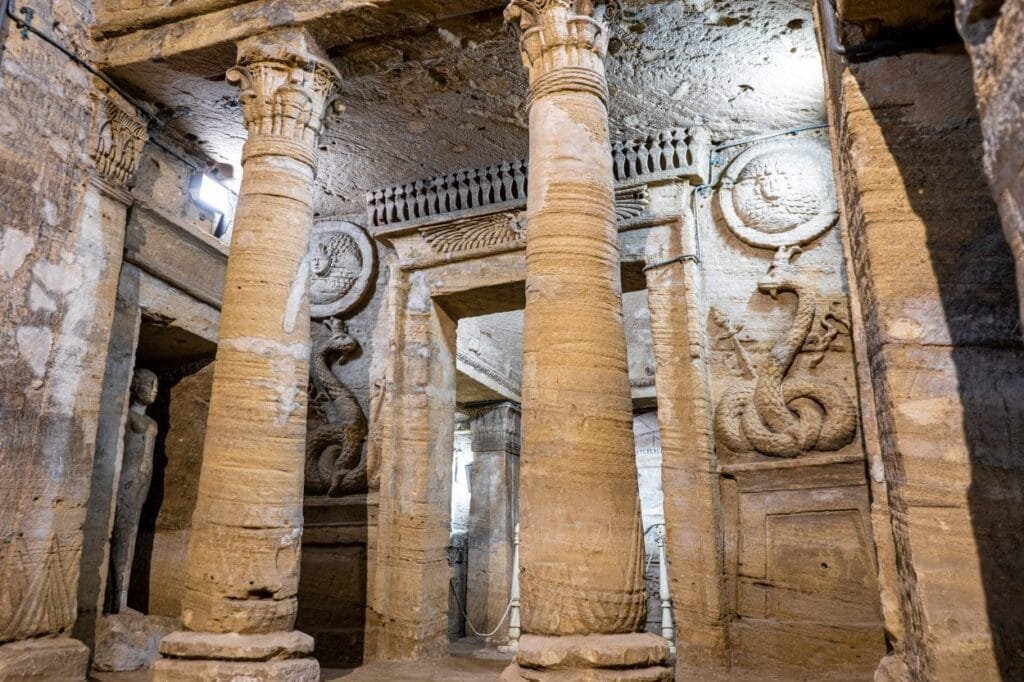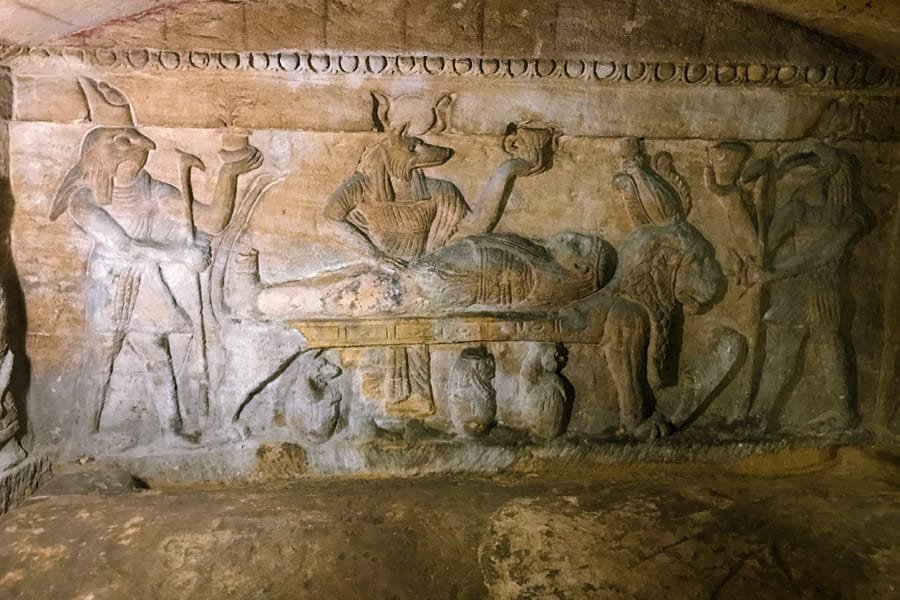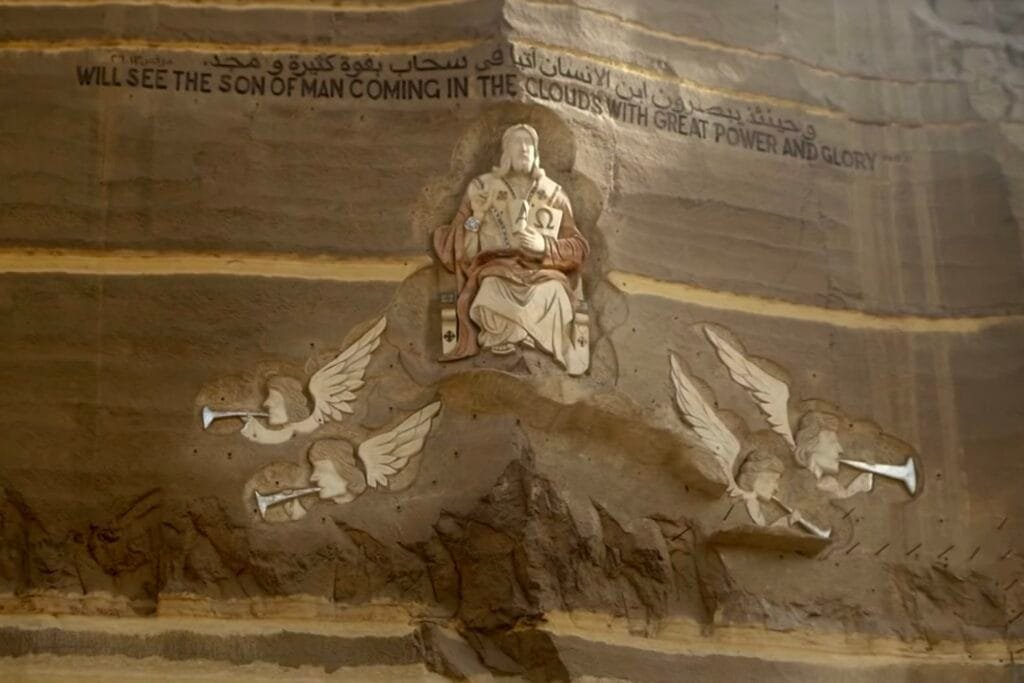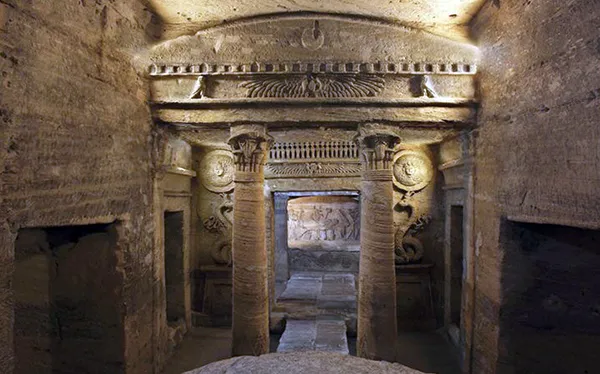The Catacombs of Kom El Shoqafa in Alexandria, Egypt, are one of the most significant and fascinating archaeological sites in the region. Located near the Mediterranean coast, this underground necropolis is a testament to the unique burial practices of the ancient Egyptian, Greek, and Roman cultures that coexisted in Alexandria over two millennia ago. The catacombs, dating back to the 2nd century AD, offer a window into the complex blend of cultures and religious traditions that shaped Alexandria during its heyday.
Egypt Tour Magic
Each tour type can be adjusted in terms of duration, activities, and accommodations to best meet the needs and interests of your clients.
About Us
Embark on a journey with Egypt Tour Magic and discover the magic of Egypt like never before …
Our Services
Discover the magic of Egypt with Egypt Tour Magic, where every detail is taken care of to ensure..
Our Team
At Egypt Tour Magic, our dedicated team is passionate about creating unforgettable travel experiences....
Refund and Returns Policy
At Egypt Tour Magic, we strive to provide exceptional travel experiences. However ..
Contact Us
We’re here to help you with any questions or to assist you in planning your next ..
Egypt Tour Magic
Explore More About Us


